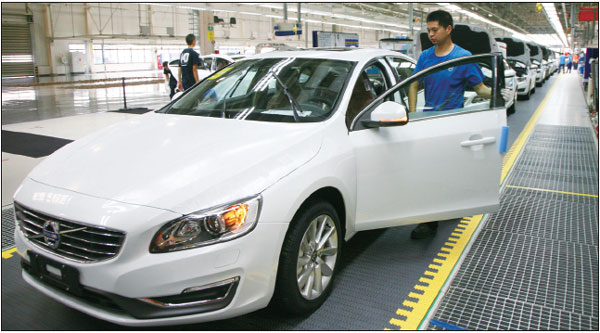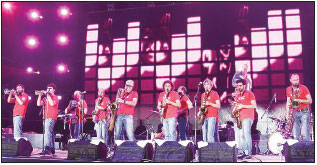West China city becoming a national center
Chengdu, a megacity in western China, recently established a new target to become a national central city. To achieve this target, it will work from its solid industrial foundation to strengthen its role as western China's center for science, technology, cultural creativity and international exchanges, as well as becoming a comprehensive transportation hub.
Automotive industry
Chengdu is a major auto-manufacturing base in western China and expects to produce 1.1 million vehicles this year, with output value of 200 billion yuan ($29.7 billion). It has attracted automakers including Dongfeng Peugeot-Citroen Automobile Ltd, FAW-Volkswagen Automobile Co, Zhejiang Geely Holding Group Co and Volvo AB, as well as many car component suppliers.
The first Peugeot 4008 car produced at the Chengdu plant of DPCA, a joint venture of French carmaker PSA Peugeot Citroen and Chinese automaker Dongfeng Motor Corp, rolled off the production line in September. The Chengdu plant is DPCA's fourth manufacturing plant in the country and boasts a planned annual production capacity of 360,000 units.
"The operation of the Chengdu plant marks a solid step forward for the development of DPCA and Dongfeng Motor in western China," said Zhu Yanfeng, chairman of Dongfeng Motor. He added that Chengdu is the gateway for the company to implement its westward strategy.
Railway hub
Chengdu is also making huge strides in transforming itself into a world-class rail transit center.
The first aluminum-alloy Model A vehicle created by CRRC Chengdu Co Ltd finished production in September. The vehicle will be used on Chengdu Metro line 7. Lan Yuzhen, general manager of CRRC Chengdu, said the success of the Model A vehicle is a testament to the city's solid progress.
"The new technologies and products will support the development of Chengdu's rail transit industry and help the city enter a new era of metro line development," he said.
CRRC Chengdu signed an investment agreement with Xindu district in August 2014 to build the China Railway Rolling Stock (Chengdu) Rail Transit Industrial Park in the district.
Meanwhile, the city has also set up research and development headquarters in the Jinniu district and another manufacturing center in Xinjin county.
To boost the scientific and technological development of rail transit in the city, Chengdu is also working with Southwest Jiaotong University to apply for the construction of a rail transit national laboratory, and is supporting the university and CRRC to build a rail transit industrial technology research institute.
According to the city's plans, it will be able to produce 4,000 rail transit vehicles a year by 2025. The whole industrial chain will generate revenue of 20 billion yuan annually.
Cultural creativity
Chengdu is the birthplace of a great number of cultural and creative companies and parks, including Redstar 35, Blue Roof Art Museum, Eastern Suburb Memory, Ming Tang Creative Center, and Nongyuan International Art Village, which are well known across the country.
The added value of the city's cultural industry reached 56.7 billion yuan in 2015, which represented about 5 percent of the city's GDP.
Although it already has a rich cultural scene, Chengdu is upgrading its infrastructure to support the further development of its creative and music industries.
Some major cultural and sports facilities are in the pipeline, including a music hall, a grand theater, an Olympic sports center and a natural history museum.
Construction on the music hall started on Oct 18 and it will open to the public in 2018. The venue will achieve worldclass standards in terms of its exterior design, scale, functions and tech facilities.
zhuanti@chinadaily.com.cn
|
A technician tests a Volvo S60L car at the Volvo Chengdu factory.Photos Provided To China Daily |
|
The Umbria Jazz Festival, one of the world's most influential jazz festivals originating in Italy, is held in Chengdu in October. |
(China Daily 11/22/2016 page11)
















